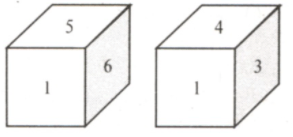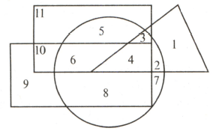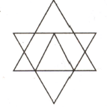Consider the following statements:
1. Every square is a rectangle.
2. Every rectangle is a parallelogram.
3. Every parallelogram is not necessarily a square.
Which one of the following conclusions can be drawn on the basis of the above statements?

Important Questions on General Mental Ability (Quantitative Aptitude /Reasoning)
In the above diagram square represents boys, the circle represents the tall persons, the triangle represents the tennis players, and the rectangle represents the swimmers, which one of the following numbers represents tall boys who are swimmers, but don't play tennis?
Which two figures out of the following four have the same area (with same units)?

Which one of the following is the water image of the figure given above?
How many triangles are there in the figure given above?
Two different positions of the same dice are shown above. If digit be on the base, which one among the following digits will be on the top?

Which one among the following figure will replace the question mark on the figure given above?




